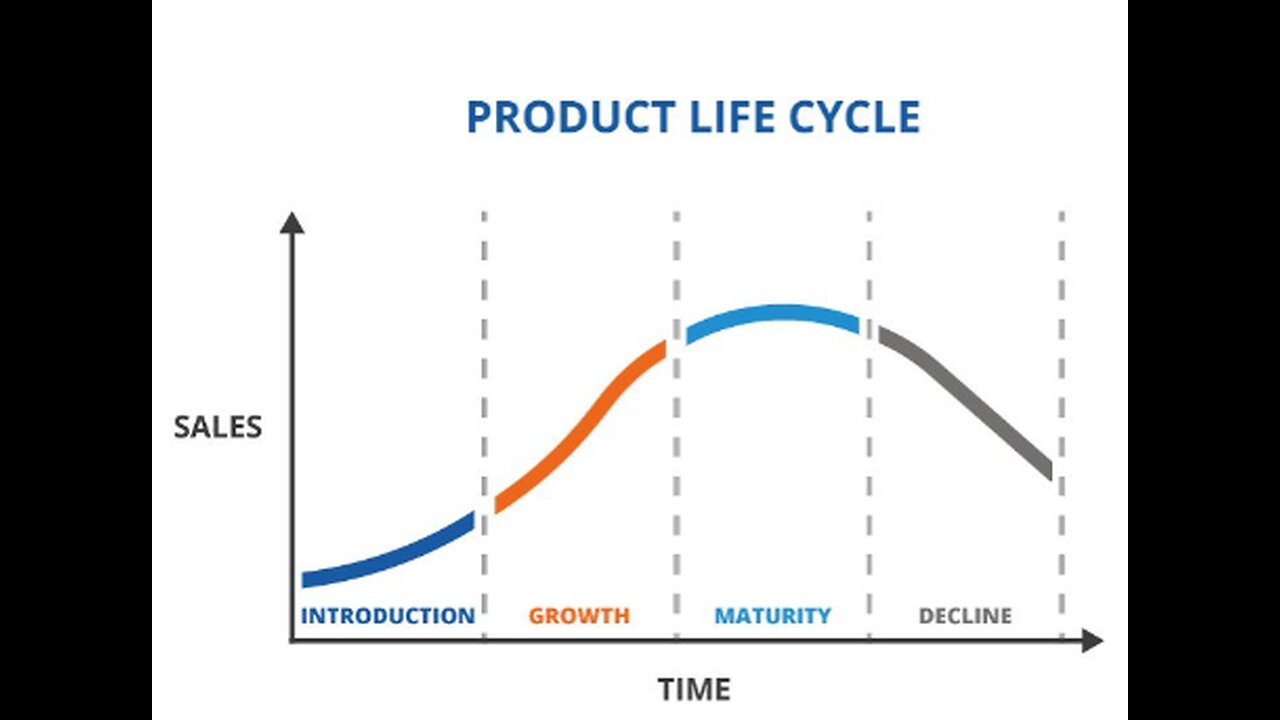Premium Only Content

Topic-Product Life Cycle (Sub-Marketing Paper)
The product life cycle is a concept used in marketing and product management to describe the stages a product goes through from its introduction to its eventual withdrawal from the market. It illustrates the evolution of a product's sales and profitability over time and helps businesses understand the different challenges and strategies required at each stage. The typical product life cycle consists of four main stages:
Introduction: This is the initial stage when a product is first introduced to the market. Sales are typically low at this point as consumers are just becoming aware of the product. Companies invest heavily in marketing and promotion to create awareness and stimulate demand. During this stage, the product may incur significant development and marketing costs.
Growth: In this stage, the product experiences rapid sales growth as more consumers become aware of its benefits. Positive word-of-mouth, effective marketing, and distribution strategies contribute to increasing sales. The product gains acceptance in the market, and profits start to rise. Competitors may enter the market during this phase, increasing competition.
Maturity: The maturity stage is characterized by stable sales and market saturation. The product has reached its peak level of adoption, and sales growth levels off. During this stage, competition is intense, and companies may focus on product differentiation or improving features to maintain their market share. Price competition may become more prominent during this phase.
Decline: In the decline stage, sales start to decrease as consumer interest wanes, or new, innovative products enter the market, rendering the current product less attractive. Companies may decide to discontinue the product or reduce marketing efforts significantly. If the product still holds value for a niche market, it may continue to generate some sales, but its overall market share diminishes.
It is essential for companies to recognize which stage their product is in to devise appropriate strategies. They may consider diversifying their product offerings, targeting new customer segments, or repositioning the product in the market. Understanding the product life cycle helps businesses plan for the future, allocate resources wisely, and make informed decisions to optimize the product's overall performance and profitability.
-
![[Thursday Strike] 360 on his head | BloodStrike + Arena Breakout |](https://1a-1791.com/video/fww1/68/s8/1/N/z/6/A/Nz6Ay.0kob-small-Thursday-Strike-360-on-his-.jpg) LIVE
LIVE
ItsLancOfficial
4 hours ago[Thursday Strike] 360 on his head | BloodStrike + Arena Breakout |
77 watching -
 1:26:01
1:26:01
Kim Iversen
5 hours agoThe Fight Is ON: Grifters, Gatekeepers & Government Overreach
104K193 -
 LIVE
LIVE
TonYGaMinG
6 hours ago🟢 LIVE NOW - TARKOV ARENA BATTLEPASS GRIND #RumbleGaming
128 watching -
 2:16:31
2:16:31
Redacted News
5 hours agoLeaked Audio EXPOSES AIPAC's Shocking Grip on Trump's National Security Team and Inner Circle
167K90 -
 1:13:38
1:13:38
Dr. Drew
9 hours agoSalty Cracker: Tariffs & Deportations & 3rd Trump Term, Oh My! – Ask Dr. Drew
56.8K57 -
 LIVE
LIVE
VOPUSARADIO
1 day agoPOLITI-SHOCK! "ELECTION INTEGRITY MATTERS! WATCH LIVE AS WE EXPOSE THE FRAUD"! W/ Chris Gleason
40 watching -
 55:18
55:18
LFA TV
9 hours agoUndoing Decades of Corruption Won’t Come Easy | TRUMPET DAILY 4.10.25 7PM
21.9K2 -
 59:07
59:07
theDaily302
12 hours agoThe Daily 302- James Patrick
17.2K1 -
 DVR
DVR
Quite Frankly
7 hours ago"Top 10 CIA Ops, Esoteric Hollywood, and More" ft. Jay Dyer 4/10/25
21.1K4 -
 58:40
58:40
Motherland Casino
20 hours agoMel x Ara
11.3K3